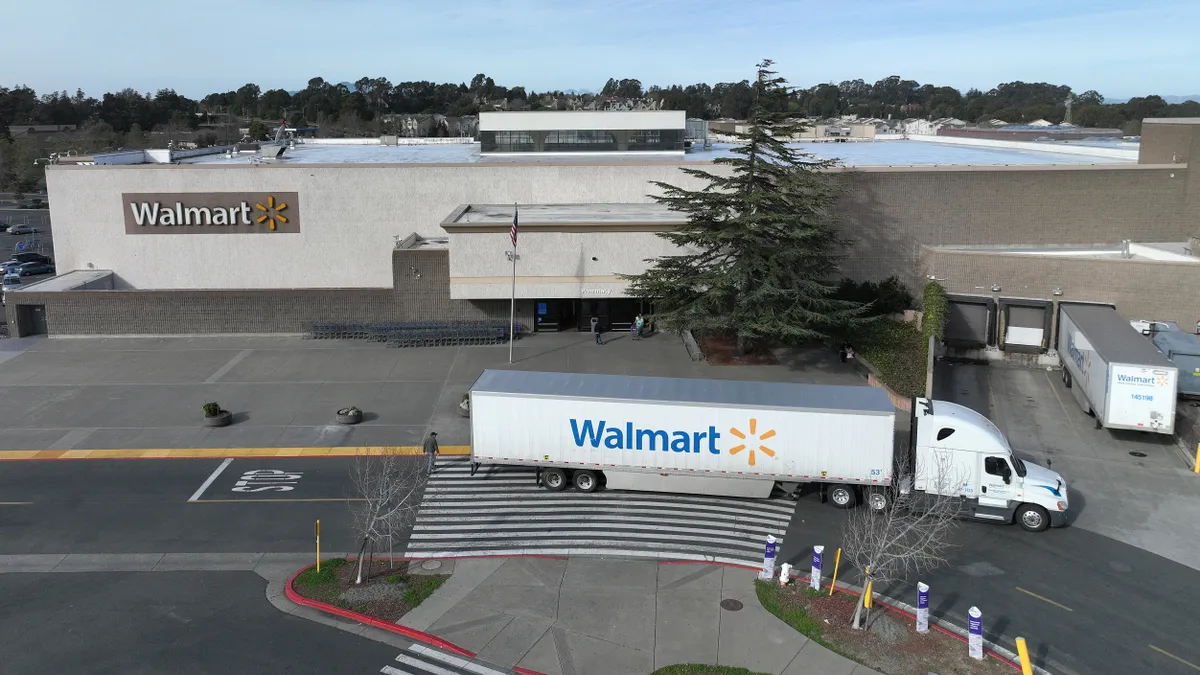Squeezed between rising logistics costs and consumers who have come to expect products at the click of a button, retailers are relying on price increases, customer experience differentiators and tech improvements to keep profits up, retailers said at an industry conference this week.
Passing some costs to consumers through subscription programs, along with the incorporation of artificial intelligence and predictive technologies can help companies maximize revenue from delivery channels, executives said. Similar to Amazon Prime, subscription programs allow customers to get free shipping in exchange for regular membership fees.
Consumers want to “have more of those in-store life experiences in their online shopping experience…more of that instant gratification,” said Mark Brundage, senior director of client success at Walmart GoLocal, speaking at the Home Delivery World conference in Philadelphia. “Consumers are actually willing to pay for those types of services.”
Over the past year, many major retailers raised minimum purchase prices eligible for free shipping to offset increased shipping costs. In 2023, Macy’s raised the threshold for free shipping to $49 from $25; Abercrombie & Fitch hiked the minimum purchase price to $99 from $75; and Neiman Marcus, which previously offered free shipping on all orders, introduced a minimum threshold of $50, The Wall Street Journal reported.
The pandemic changed the way customers shop, Target’s vice president of last mile operations Daryl Glass said. Retailers, however, are being squeezed by rising shipping costs. Late last year, shipping giants UPS and FedEx announced a 5.9% average rate increase on their various shipping services. In addition, disruptions to Red Sea shipping routes are expected to continue throughout this year, adding ongoing uncertainty to logistics costs.
Subscriptions
Flat-fee subscription programs for free shipping — which are offered by Target, Walmart and Kroger — are one way to recoup some of the costs, as consumers willingly pay for the convenience, retailers said. Consumers also have opportunities for free pickup in stores and free returns, according to Glass.
In recent years, retailers have been increasingly relying on physical stores as e-commerce order hubs to make delivery efforts more efficient.
When a customer orders online, the order is packed and filled at the store and placed on Walmart’s Spark Driver platform, an in-house driver network that oversees driver operations. When a driver enters the Walmart location, the app will inform them where the product is stored, after which the associates hand the goods to the driver, Brundage said.
Use of stores as such hubs, said Target’s Glass, also ensures delivery efforts are more sustainable, because the company is closer to the source of the demand.
In order for orders to be processed as quickly as possible, retailers said they’re investing in AI and predictive tools to ensure the sorting of orders at distribution facilities.
Walmart, for example, uses these technologies to sort items, unpack boxes into delivery pallets and route pallets to the right stores, Brundage said. The company also uses AI and predictive technologies to understand when shopper surges happen.
Leaning into customer experience
Flexibility and experiential improvements in delivery programs might encourage some consumers to join subscription-based delivery programs instead of physically going to stores.
Such programs can, for example, ensure all food items are kept at an optimal temperature — maximizing convenience for the customer, said Mike Baker, head of final mile at Kroger.
Delivery vehicles, for example, are equipped to ensure ice cream is kept cold en route and until the order reaches the customer’s home.
Kroger also offers subscribers the flexibility to change the delivery address when they are traveling.
“From farm to fridge, our goal [is] it needs to be brought to you as freshly as if you could have done it yourself, driving it on your own,” said Baker.











